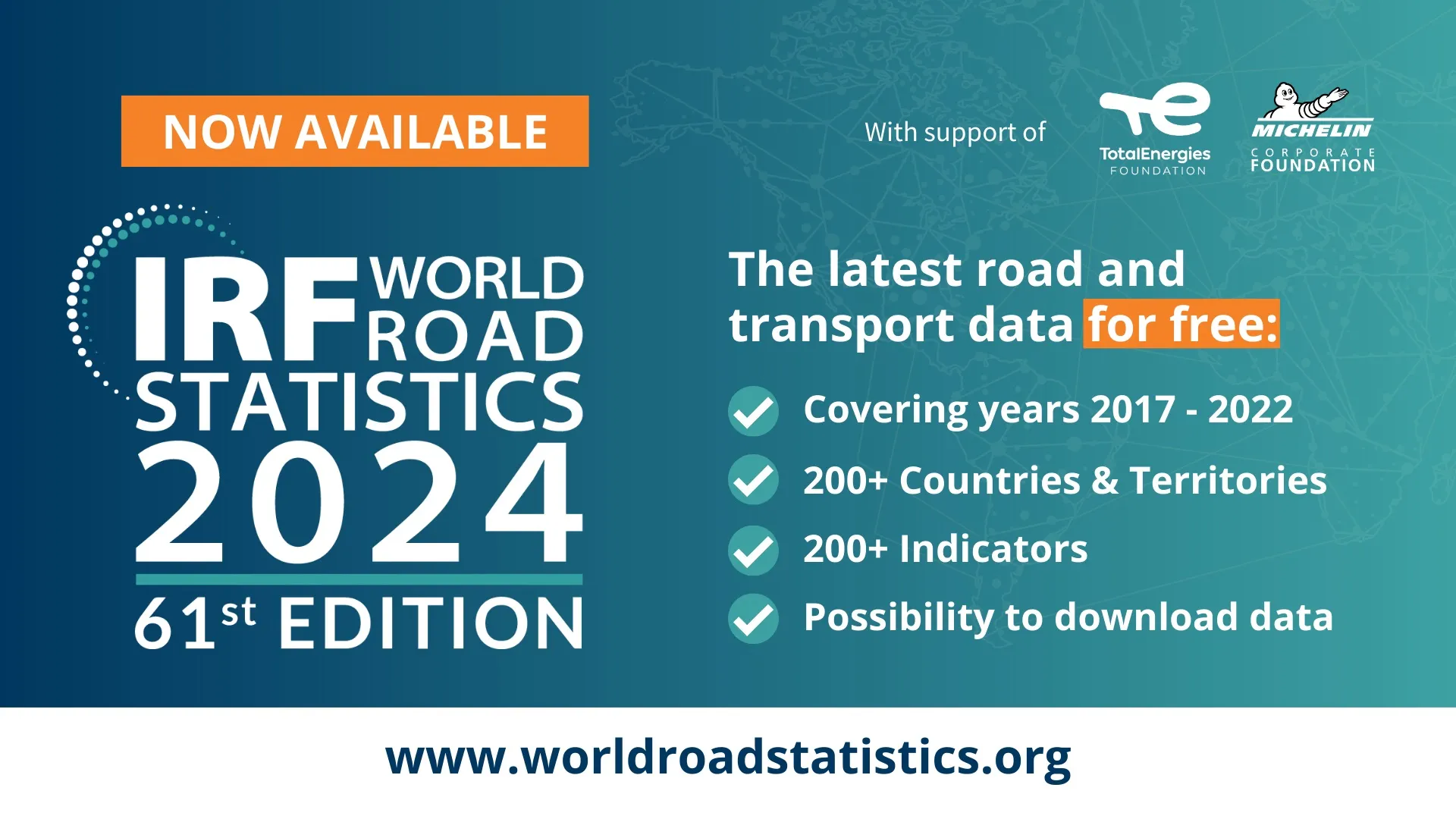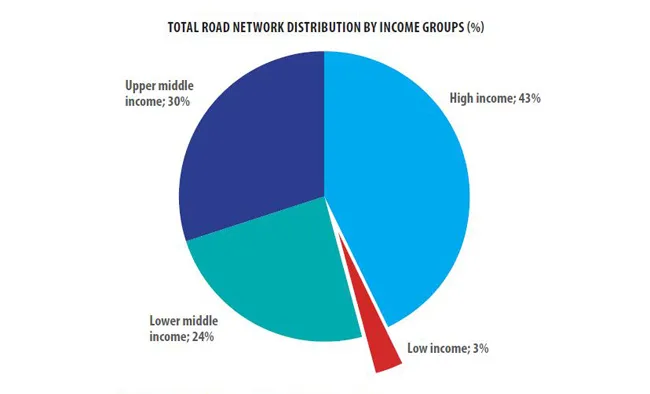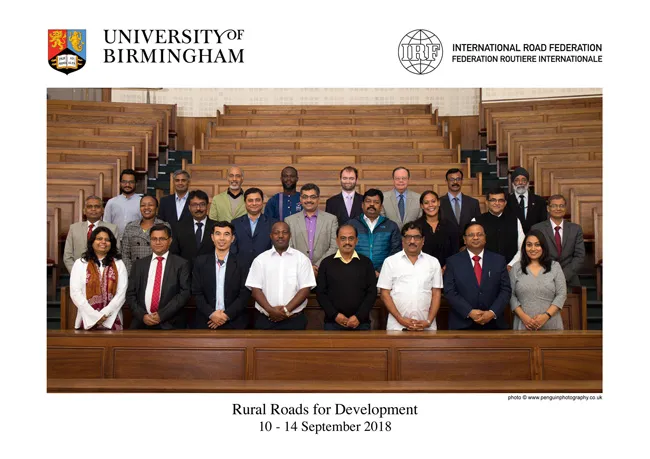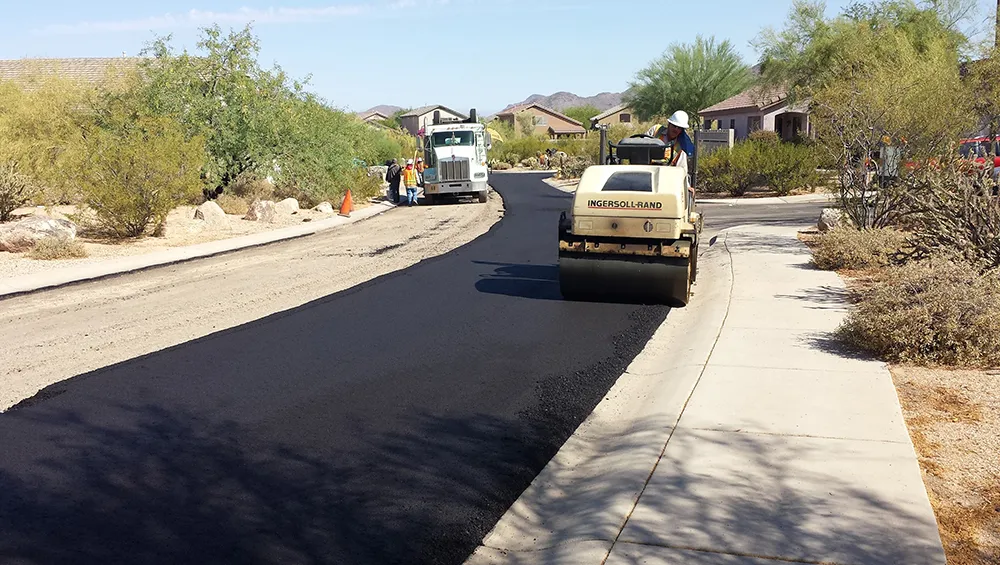
The release of the 61st edition of the IRF World Road Statistics 2024: empowering decision-makers with critical global transport data
The International Road Federation (IRF) is proud to release the 61st edition of the IRF World Road Statistics (WRS), arguably the most complete and latest source of data for road transport. This edition encompasses data for the years 2017 – 2022, for over 200 countries and territories, and over 200 indicators.
The IRF World Road Statistics are available for free through the IRF WRS Data Warehouse online platform, thanks to the generous support of the TotalEnergies Foundation and the Michelin Corporate Foundation.
Through the IRF WRS Data Warehouse, users can seamlessly explore and analyse data, aiding evidence-based decision-making at every level. Users can, for instance, compare data across countries and time periods, analyse multiple metrics for a single country, access interactive road safety dashboards, and download data in various formats, among many other features.
With the transport sector facing increasing challenges such as climate resilience and road safety, access to reliable and current data has never been more essential. The WRS equips policymakers, researchers, and industry leaders with the critical insights necessary for informed decision-making, effective policy design, and sustainable innovation globally.
The 2024 edition features comprehensive data on road networks, vehicle fleets, motorisation trends, and traffic volumes, as well as insights into investment trends in road infrastructure and maintenance. Additionally, it includes road safety data and dashboards that highlight both global and regional trends, along with much more information.









